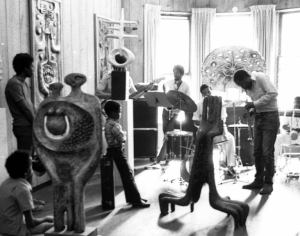
Andy has indeed died, as the audience sees in the opening sequence, and has somehow managed to find his way home. So when Andy returns, she delights in this truth even though his father (Charles played by Faces and Godfather star John Marley) suspects something is wrong. The mother (Christine Brooks played by Faces actress Lynn Carlin) refuses to believe that her son Andy could possibly be dead, even when military officers deliver its confirmation. In Deathdream there is a powerful, near transcendent, relationship between mother and son. The family structure lays at the center of these post-Vietnam horror films, no matter how messed up in its depiction (re: the Virgin Spring-inspired parental revenge and/or the in-bred role-shifting dynamic). However, unlike the visceral explosions played out in Wes Craven’s The Last House on the Left (1972) and Tobe Hooper’s The Texas Chainsaw Massacre (1974), Deathdream is a representation of hope in the faith of certain death his family wants so much to believe he is alive, almost as much as he wants to come to terms with his death. Deathdream visualizes this return in the ghostly form of a young deceased soldier, finding his way back to his family and to establish his final resting ground on familial soil. These films positioned this trauma back onto the United States by expressing the horror of war returning back to a place in which it originated but wasn’t fought.

BUY YOUR TICKETS HERE!īob Clark’s 1972 cult classic Deathdream (original title: Dead of Night) is part of a select group of films from the era that dealt with the trauma of the Vietnam War.
#Death dream 1972 free
This includes an introduction by Adam Lowenstein (author of Shocking Representation: historical trauma, national cinema, and the modern horror film) and FREE cocktails compliments of Pernod Absinthe. Nitehawk presents a very special and rare 35mm screening of Bob Clark’s Deathdream this Tuesday (February 12) at 1opm.


 0 kommentar(er)
0 kommentar(er)
